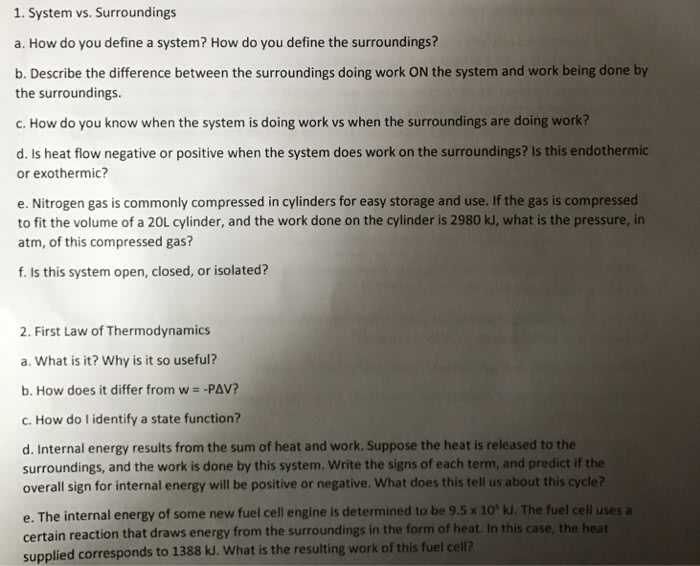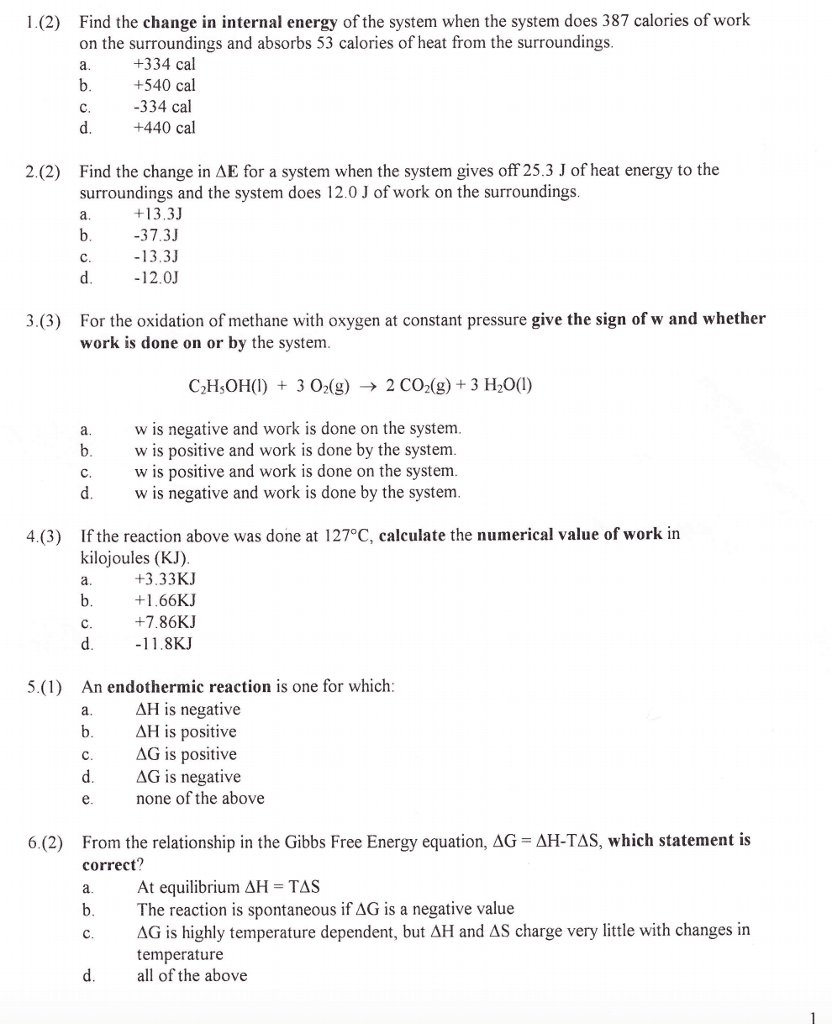1.) Which statement isincorrect?
(a) Energy is the capacity todo work or to transfer heat.
(b) Kinetic energy is theenergy of motion.
(c) Potential energy is the energy that a system possesses by virtue ofits position or composition.
(d) A process that absorbsenergy from its surroundings is called exothermic.
(e) The Law of Conservation of Energy is another statement of the FirstLaw of Thermodynamics.
2. Which of the following statementsabout the first law of thermodynamics and energy is false?
(a)Kinetic energy cannot be convertedto potential energy.
(b)Kinetic energy =1/2mv2.
(c)All the energy in the universe isconserved.
(d)A system can never decrease itsenergy.
(e)Potential energy is the energy ofposition or composition.
3. Whichone of the following thermodynamic quantities isnot a state function?
(a)work (b) enthalpy (c)entropy (d) internalenergy (e) free energy



